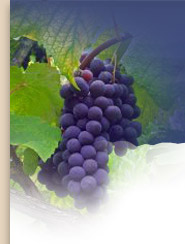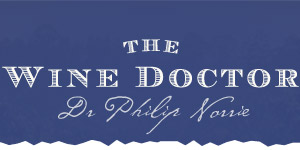Why White Wine is Just as Good for you as Red Wine
Ever since Professor Serge Renaud's "French Paradox" paper (1) was published in the Lancet in 1991 wine consumers have had a mind-set that only red wine and not white wine is good for them. This article will show that it does not matter whether it is red wine or white wine, so long as it is wine consumed in moderation on a regular daily basis, then you will gain significant health benefits.
It has been well documented that consuming wine in moderation can reduce death from all causes by up to 50% (2) mainly due to reducing our society's biggest killer, vascular disease, by up to 50% (3) and cancer by up to 24% (4). It is also good for relieving society's other big disease group the stress related diseases. Vascular disease occurs when bad cholesterol (LDL) is deposited in artery walls and swells up, eventually rupturing causing a clot to form which blocks off the artery, and thus denying the tissue supplied by that artery of blood, hence it dies.
Alcohol in moderation reduces the bad cholesterol level, raises the good cholesterol (HDL) level and acts as an anti-coagulant (blood clotting preventer). Good cholesterol clears away bad cholesterol from atheromatous plaques in artery walls and takes it back to the liver for remetabolism. Wine contains substances called antioxidants which inhibit bad cholesterol from being incorporated in the artery wall and damage caused by the body's free radicals, toxic waste products which help cause degenerative diseases in the body such as cancer, alzheimer's disease, Parkinson's disease and aging.
The standard for antioxidants are vitamins C and E but wine contains the strongest antioxidants in nature called resveratrol, quercitin and epicatechin, which are five times stronger than vitamin E. Frankel (5) has shown that no matter how much vitamin E you take its antioxidant activity plateaux at 20% whereas wine's antioxidants will plateau at 100% after a couple of glasses. It should also be noted here that the fermentation process of converting grapes into wine enhances the antioxidant level many times and also produces alcohol, so that is why wine is by far more superior for your health than taking concentrated grape extract as has been advocated by some misguided anti-alcohol health freaks!
Getting back to Professor Renaud's "French Paradox". The French Paradox is the observation that the French, despite eating a vascular disease predisposing disaster diet rich in cholesterol, have significantly less coronary heart disease than other similarly advanced countries. The reason for this according to Professor Renaud is because the French are high consumers of wine. Professor Renaud advocates especially red wine but his paper only mentioned alcohol and wine, not specifying red or white wine.
Dr. Frankel's research has shown that red wine contains more antioxidants than white wine with the amount varying according to the grape variety, region, vintage climate (summer rainfall increases resveratrol levels because grapes produce more resveratrol in their skins to protect themselves from fungus due to increases in atmospheric moisture), soil, storage in oak (oaked wines have more antioxidants that unoaked wines) and filtration techniques (Professor Geoff Skurray at the University of Western Sydney (6) has shown that the fining agent polyclar removed 92% of resveratrol while casein, egg white and alginate also removed some resveratrol whilst gelatin had relatively little effect).
But the only relevance for the average wine drinker comes out when one looks at studies which compare red and white wine consumption and mortality out in the real world and not theoretically in a laboratory. There have been several studies which show that it doesn't matter. In 1995 Vinson and Hontz from the Department of Chemistry at the University of Scranton published a paper titled "Phenol Antioxidant Index: Comparative Antioxidant Effectiveness of Red and White Wines". (7) What this study showed was that even though red wines had a higher phenol content than white wine "The white wines had a significantly lower 1C50 (the concentration for 50% inhibition of low-density lipoprotein or bad cholesterol) and thus were better antioxidants than red wines". The take home message here is that it does not matter what the total antioxidant potential is i.e. total antioxidant or phenol level, but how effective are these antioxidants at doing their job - in this case inhibiting bad cholesterol.
Dr. Karl Jung and Associates at the University of Mainz published a research paper in 1999 "Moderate red and white wine consumption and the risk of Cardiovascular Disease". (8) The paper's summary stated "White and red wine improved the antioxidative capacity in the blood. The sum of the changes in cardiovascular protective blood values, the "protective wine score", which includes all parameters, showed a clear improvement in both wine groups. The scores for moderate wine consumption were higher than for water, and white wine scored higher than red wine. Systolic blood pressure reduced significantly in the white wine group, and the distolic blood pressure reduced in both wine groups. This study shows that moderate regular wine consumption reduces the risk of cardiovascular disease. The effects of both German wines, red and white were comparable, in some parameters white wine delivered even better results than red wine".
Across the Atlantic and research in the United States by the Jordan Heart Research Foundation (9) found that free radicals were reduced by 15% in red wine drinkers and 34% by white wine drinkers, while red wine drinkers experienced a reduction in the blood's clotting ability of 10% and white wine drinkers 20%.
So why are the antioxidant molecules in white wine apparently more effective than those found in red wine even though they may be in greater number in red wine. The answer lies in research by Dr. Gordon Troup, a physicist at Monash University in Melbourne. Dr. Troup used an electron spin resonance spectroscope to examine the actual size of the various antioxidant molecules in wine and showed that those in white wine are smaller and thus more effective because they can get further out into the tissues to do their job. A biochemical analogy would be like comparing the smaller more effective immunoglobulin lgG molecule which gets to all the body's tissues to provide antibody coverage versus the larger immunoglobulin lgM which is restricted to just the vascular system for its area of operation.
In a letter to the Editor of the International Journal of Food Science and Technology titled "Free Radical scavenging abilities of beverages" (10) Dr. Troupe pointed out that "…if the health-promoting properties of wines are related to their superoxide-scavenging abilities, then white wine is at least as effective as red".
Thus it can be seen that it does not matter which colour wine one drinks because both red and white wine contain alcohol and enough antioxidants; and once you get up to 100% antioxidant activity in your body's tissues, anything extra is redundant anyway. What does matter is that one marries the right wine to the right food. Thus the correct combination of wine and food is the most important criteria by which one chooses a wine - not just because it is a red!
- Renaud, S. – Wine, Alcohol, Platelets and the French Paradox for Coronary Heart Disease The Lancet, Vol. 339, June 20, 1992, pages 1523 - 1526
- Gronbaek, M. – Mortality associated with moderate intakes of wine, beer and spirits
B.M.J. Vol. 310, 6 May, 1995, pages 1165-68
- Simons, L.A. – Alcohol Intake and Survival in the Elderly: a 77 month follow-up in the Dubbo Study Aust. NZ Journal of Medicine, Vol. 26, No. 5, Oct. 1996, pages 662-670
- Renaud, S. – Alcohol and Mortality in mid middle aged men from Eastern France
Epidemiology 1998, Vol 9, No. 2
- Frankel, E. N. – Red Wine Antioxidants and Potential Health Benefits.
Address to the Society of Medical Friends of Wine 19/10/94
Mark Hopkins Intercontinental Hotel, San Francisco
- Skurray, G. – Wine Making Practice and Resveratrol in Wine, 1998
Centre for Advanced Food Research, University of Western Sydney, Hawkesbury
- Vinson, J.A. and Hontz, B.A. – Phenol Antioxidant Index: Comparative Antioxidant Effectiveness of Red and
White Wines
Journal Agricultural Food Chemistry 1995, 43, pages 401-403
- Jung, K. et.al – Moderate Red and White Wine Consumption and the Risk of Cardiovascular Disease,
Herz/Kreisl, 31 (1/99), pages 25 - 31
- Jordan Heart Research Foundation - A drink a day can keep a heart attack away
ME Magazine, Autumn 1997, page 21
- Troup, G.J, – Letter to the Editor – Free radical scavenging abilities of beverages.
Int. Journal of Food and Science and Technology 1995, 30, pages 535 -537,
Dr Philip NORRIE
MBBS,MA,MSc,MSocSc[Hons],PhD,MD, currently doing M.Phil































